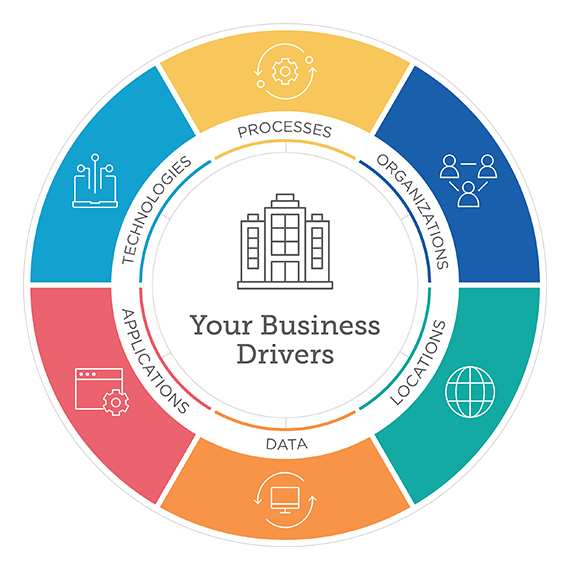Business Process Modeling & Analysis
Business process modeling visualizes business processes and associated data to shine a light on organizational workflows ripe for innovation and improvement. While every company should understand and be able to describe its business processes, highly-regulated enterprises in industries where quality, health, safety and environmental considerations are paramount have an even greater need and responsibility. By documenting and being able to easily share visual business process models with others, organizations are primed to identify efficiency opportunities, protect against operational risk, and can be ready to support regulatory compliance or auditing needs.

What is business process modeling?
Business process modeling, as part of business
process analysis and business process improvement initiatives, documents how
an organization works. Through charts and diagrams, business process modeling
and notation (BPMN) software provides a graphical depiction of the management,
operational and supporting processes within an organization and depicts their
interaction. Business process modeling is typically collaboratively performed
by a team of business analysts with experience creating BPMN models and
business experts with knowledge of the business processes being modeled.
Business process modeling and analysis is foundational in supporting
organizational change and transformation.
Why is business process modeling important?
Business process modeling enables business analysts to model, document, manage and communicate business processes by providing a clear picture of workflows, inputs and outputs. With clarity around its business processes, an organization can work to better align people, processes, data, technologies and applications to meet its strategy. Business process modeling and notation diagrams, and accompanying analysis, help teams to more quickly see areas for improvement as well as practices susceptible to security, compliance and other risks so controls can be put into place to mitigate exposure. With up-to-date business process models, companies are well-positioned to more quickly identify and optimize critical end-to-end processes and value streams, such as lead-to-cash pipelines or customer experiences.
The benefits of business process analysis
By routinely performing business process analysis and modeling when tackling organizational change, teams can quickly see and fast-track opportunities for efficiency and effectiveness as well as reduce risks and sidestep potential problems. Business process analysis and business process modeling notation diagrams have proven valuable for organizations pursuing the following types of initiatives:
Digital transformation
Business process models can help teams understand information assets within a business context to identify digital transformation opportunities.
Regulatory compliance
Demonstrate and share compliance by detailing regulatory processes, streamlining controls and audits, and assessing regulatory impacts of process change.
Data governance
See where data is and how it is used within business processes to gauge data opportunities and avoid regulatory and compliance missteps.
Process improvements
Determine process gaps, inefficiencies and redundancies when reviewing business process models and supporting enterprise information.
Mergers & acquisitions
Document business processes through BPMN diagrams to ease M&A transitions and align common processes, best practices, operations and teams.
Knowledge retention
Capture key stakeholder business process knowledge centrally for future use, supporting business continuity upon any change in staffing.
Corporate policy management
Digitize and maintain process documents and standard operating procedures online for easy employee reference of policies, procedures and controls.
Enterprise technology deployments
Use process modeling to capture and monitor enterprise software application processes, changes and improvements.
Why business process modeling software?
With business process modeling software, you can literally map out how your organization works. Visualize value streams, standard operating procedures, RACI matrices and the data elements that support the business processes and interactions occurring throughout your enterprise. Once documented, business analysts have access to the visualization and analysis capabilities needed to drive improvement, optimize operations and boost performance. Use business process modeling software to:
- Paint a clear picture of workflows, inputs and outputs
- Gain visibility and context
- Adopt centralized, uniform processes
- Clarify roles and responsibilities
- Analyze value chains
- Enhance customer journeys
- Streamline transactions
- Reduce errors, bottlenecks and inefficiencies
- Identify how to introduce more process automation
- Improve risk management, corporate governance and data governance
- Unlock and retain knowledge
- Increase productivity, profitability and employee retention
How can erwin Evolve by Quest help?
erwin Evolve by Quest can help your organization map, analyze and better understand the business processes, system interactions and organizational hierarchies that drive your enterprise. Use business process modeling and analysis capabilities to clearly document and assess workflows. Build and work with models to discover new opportunities, minimize risks and increase efficiencies. erwin Evolve helps hundreds of organizations get the most out of business process modeling each day by delivering:
A scalable, centralized repository
Develop, store and share business process artifacts using a reliable, enterprise-strength central repository as a single source of truth.
Role-based visibility
Provide stakeholders with role-specific access and views of the business process information most pertinent to their needs.
Impact analysis
Assess the impact of change using business process model elements, links and dependencies and analytics including heatmaps, reports, charts and graphs.
Enterprise collaboration
Bring cross-functional teams together to uncover critical insights faster and ensure informed decision-making that will drive successful outcomes.
Business & IT interoperability
Eliminate organizational silos and share data across operational processes, applications and models.
Enterprise architecture
Beyond business process modeling, erwin Evolve includes enterprise architecture
capabilities. Link business processes to the underlying applications,
technologies, organizations, locations and supporting data for a comprehensive
view.
Professional services
Fast-track ROI by partnering with knowledgeable consultants with a proven track record helping companies implement business process best practices and methodologies.
erwin Evolve with both business process
modeling and enterprise architecture is integrated with other components of the
erwin EDGE by Quest platform. Combined with data
modeling, data catalog and data literacy capabilities, the data
from all your business, technical and data architectures can be governed and
optimized.
